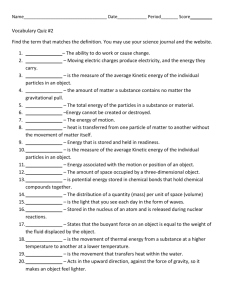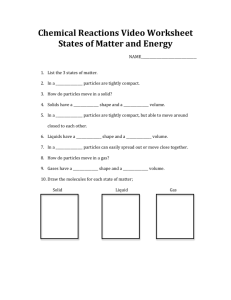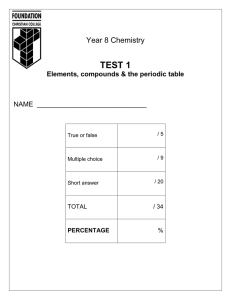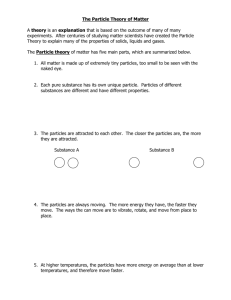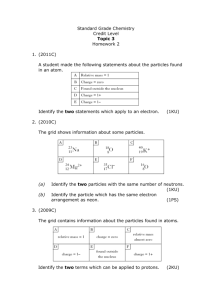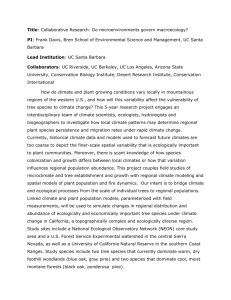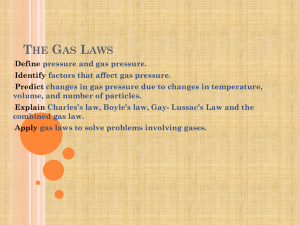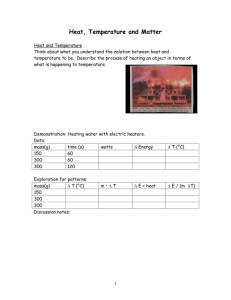PhET SIMULATION: STATES OF MATTER
advertisement
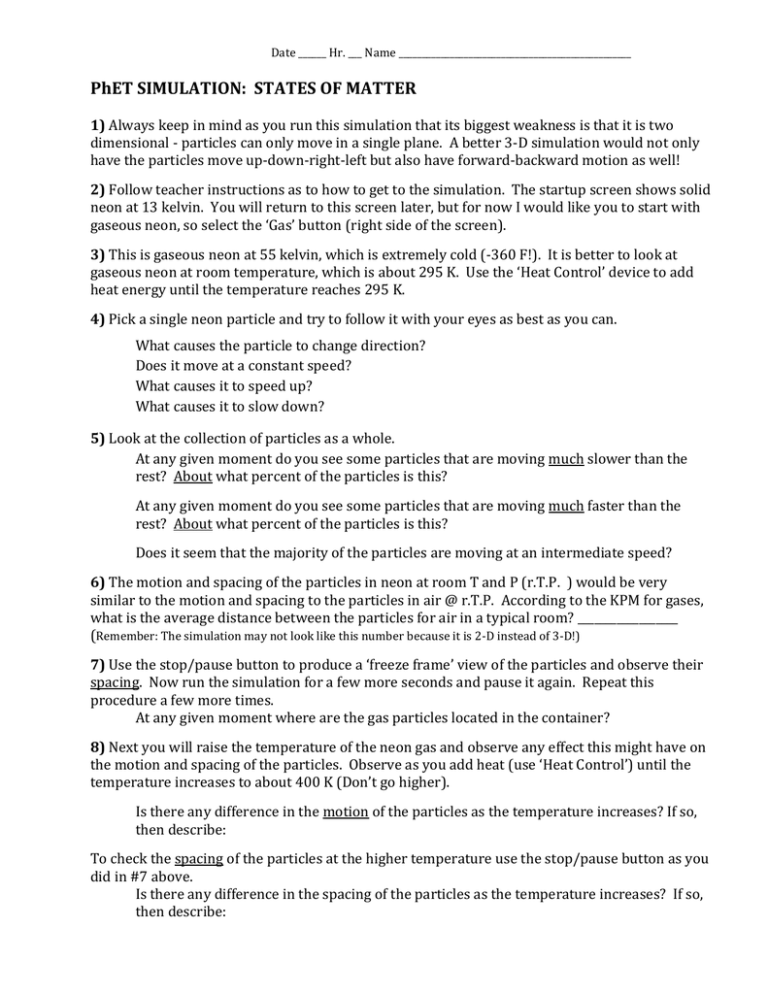
Date ______ Hr. ___ Name __________________________________________________ PhET SIMULATION: STATES OF MATTER 1) Always keep in mind as you run this simulation that its biggest weakness is that it is two dimensional - particles can only move in a single plane. A better 3-D simulation would not only have the particles move up-down-right-left but also have forward-backward motion as well! 2) Follow teacher instructions as to how to get to the simulation. The startup screen shows solid neon at 13 kelvin. You will return to this screen later, but for now I would like you to start with gaseous neon, so select the ‘Gas’ button (right side of the screen). 3) This is gaseous neon at 55 kelvin, which is extremely cold (-360 F!). It is better to look at gaseous neon at room temperature, which is about 295 K. Use the ‘Heat Control’ device to add heat energy until the temperature reaches 295 K. 4) Pick a single neon particle and try to follow it with your eyes as best as you can. What causes the particle to change direction? Does it move at a constant speed? What causes it to speed up? What causes it to slow down? 5) Look at the collection of particles as a whole. At any given moment do you see some particles that are moving much slower than the rest? About what percent of the particles is this? At any given moment do you see some particles that are moving much faster than the rest? About what percent of the particles is this? Does it seem that the majority of the particles are moving at an intermediate speed? 6) The motion and spacing of the particles in neon at room T and P (r.T.P. ) would be very similar to the motion and spacing to the particles in air @ r.T.P. According to the KPM for gases, what is the average distance between the particles for air in a typical room? __________________ (Remember: The simulation may not look like this number because it is 2-D instead of 3-D!) 7) Use the stop/pause button to produce a ‘freeze frame’ view of the particles and observe their spacing. Now run the simulation for a few more seconds and pause it again. Repeat this procedure a few more times. At any given moment where are the gas particles located in the container? 8) Next you will raise the temperature of the neon gas and observe any effect this might have on the motion and spacing of the particles. Observe as you add heat (use ‘Heat Control’) until the temperature increases to about 400 K (Don’t go higher). Is there any difference in the motion of the particles as the temperature increases? If so, then describe: To check the spacing of the particles at the higher temperature use the stop/pause button as you did in #7 above. Is there any difference in the spacing of the particles as the temperature increases? If so, then describe: 9) Next select the ‘Liquid’ button to view the simulation of neon as a liquid. To be a liquid neon must be very, very cold. Note the temperature here: ________ 10) As you did with gases pick a single neon particle and try to follow it with your eyes as best as you can. Next look at the collection of particles as a whole. Does the simulation show particles constantly colliding with neighboring particles? Does the simulation show whole clusters rotating? Does the simulation show particles bordering a gap ‘shooting the gap’, transferring from one cluster to another? 11) The particles on the ‘surface’ of the liquid are constantly moving. According to the KPM what keeps (most) particles from leaving the liquid despite their motion energy? Occasionally some of the particles do ‘escape’ from the liquid. What is the name for the change in state that this is simulating? What do the particles that ‘escape’ have that the particles that do not escape don’t have? Or, why do very few particles escape but not most? 12) Use the heat control to raise the temperature ONLY 2 KELVINS (to 28 K). According to the KPM for liquids, what should now be different about the … motion of the particles? spacing of the particles? 13) Next select the ‘Solid’ button to view the simulation of neon as a solid. For neon to exist as a solid it must be extremely cold. Note the temperature here: ________ What phrase does the KPM for solids use to describe the motion of an individual particle in a solid? Does the simulation show the solid neon as a crystalline solid or as an amorphous solid? (Do NOT answer ‘yes’ or ‘no’ --circle the correct option!) 14) Use the simulation to try to estimate the melting point and the boiling point of neon. This is difficult because the simulation is not great for this, but do your best. SLOWLY add heat to SLOWLY raise the temperature of the solid neon to estimate the temperature at which the solid neon turns into liquid neon, and then when the liquid neon turns into gaseous neon. It works best to change the temperature 2-4 Kelvins at a time and then observe for a while to see the effect on the simulation. After you have gone to gaseous neon you can then reverse the process by SLOWLY lowering the temperature by removing heat. By going through this process several times you should be able to estimate the temperature at which the changes in state occur. What is your estimate of neon’s melting point? ___________ (Its OK to give a range ) What is your estimate of neon’s boiling point? ___________ 15) If time remains try the other substances. Notice that oxygen and water are molecules (more than 1 atom acting as a unit particle). Do molecules behave different than atoms of neon? If yes, then in which ways are the motion or spacing different?
